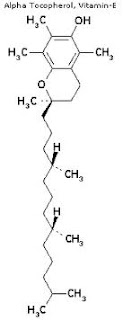1. Neon
Looking at the orange light: I see a rainbow spectrum. On the left and right I see red, orange, and yellow vertical lines. and above that I see a horizontal line of the colors of the rainbow.
2. Switched to the has Helium.
The light is faded. When I look to my right and left I notice one vertical line that is orange and colors of green to red on the spectrum, but its very light.
3. Argon
Looking at Argon I can see violet colors and the rainbow, but violet is the darkest color I can see.
4. Nitrogen
Looking at Nitrogen I can see a longer and more clearer color spectrum ranging from violet to red and the colors are very clear to see.
5.Carbon Di oxide
I can see the colors of green yellow and orange the colors on furthest out on each side are faded.
Visualizing Chem Blog
Thursday, January 20, 2011
Day 7 Activity 2 1/20/11 Antacids
Write the formula for Tums chemically react with water and stomach acid?
How many Tums are needed to neutralize a can of coke?
How many Tums are needed to neutralize a can of coke?
Day 7 Activity 1 1/20/11 Experimental Design and Conclusions
Reflect on the expansion of water and salt water experiments you and your classmates performed. What are some of the interesting results and struggles with this experiment.
Relate you thoughts on this experment to the scientific question "Is the earth warming?"
Relate you thoughts on this experment to the scientific question "Is the earth warming?"
Wednesday, January 19, 2011
Day 7 Homework
For your last homework assignment, choose 20 items around you in your world and list their ingredients or materials down to the molecular level. List the chemical names of the ingredients and show a molecular structure image.
1. Coffee:
a. Ingredients
i. Caffeine
ii. Tannin
iii. Thiamin
iv. Xanthine
v. Spermidine
vi. Citric Acid
vii. Chlorogenic acid
viii. Trigoneline
ix. Acetaldehyde
x. Spermine
xi. Hypoxanthine
xii. Putrescine
xiii. Scopoletin
2. Perfume
a. Ingredients
i. Benzaldehyde
ii. Benzyl alcohol
iii. Camphor
iv. Ethanol
v. Ethyl acetate
vi. Linalool
3. Peanut butter
a. Ingredients
i. Vitamin b3
ii. Vitamin e
iii. Magnesium
iv. Folate
v. Dietary fiber
vi. Arginine
vii. Antioxidant coumaric acid
b. http://en.wikipedia.org/wiki/Peanut_butter
4. Oatmeal
a. Protein
b. Fat
c. Carbohydrates
d. Calcium
e. Phosphorous
f. Iron
g. http://www.csudh.edu/oliver/chemdata/foodcomp.htm
5. T-shirt
5. T-shirt
a. Cotton
b. http://www.t-shirt-buyers-guide.org/custom_t-shirts/cotton_t-shirts.htm
6. Glass
6. Glass
a. Silica
b. http://en.wikipedia.org/wiki/Glass
7. Rubber
a. Latex (Polyisoprene)
b. Proteins
c. Fatty acids
d. Resins
a. Wool
b. Indigo die
c. http://www.madehow.com/Volume-1/Blue-Jeans.html
9. Chewing gum
a. Butadiene-styrene
b. Polyethylene
c. Polyvinyl acetate
d. http://www.madehow.com/Volume-1/Chewing-Gum.html
10 Super Glue
a. Ethyl cyanoacetate
b. Formaldehyde
c. Nitrogen gas
d. http://www.madehow.com/Volume-1/Super-Glue.html
11 Bleach
a. Chlorine
b. Caustic soda
c. Water
d. http://www.madehow.com/Volume-2/Bleach.html
12 Button
a. Polyester
b. http://www.madehow.com/Volume-2/Button.html
13 Crayon
a. Paraffin
b. http://www.madehow.com/Volume-2/Crayon.html
14 Gasoline
a. Petroleum
b. http://www.madehow.com/Volume-2/Gasoline.html
15 Rope
a. Hemp
f. http://www.madehow.com/Volume-2/Rope.html
16 Mosquito repellent
a. Diethly-m-toluamide
b. Citronella oil
c. Dimethyl phthalate
d. http://www.madehow.com/Volume-3/Mosquito-Repellent.html
17 Screw
a. carbon
b. steel
c. http://www.madehow.com/Volume-3/Screw.html
18 Bowling Ball (outside)
a. Polyester
b. http://www.madehow.com/Volume-4/Bowling-Ball.html
19 Chopsticks
a. Aspen
b. http://www.madehow.com/Volume-4/Chopsticks.html
20 Cotton Candy
a. Sucrose
b. http://www.madehow.com/Volume-4/Cotton-Candy.html
Subscribe to:
Posts (Atom)




























































